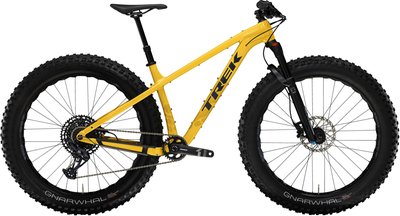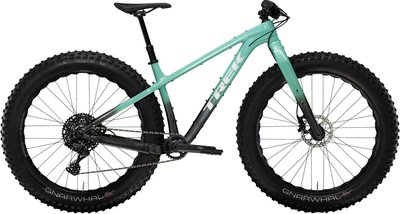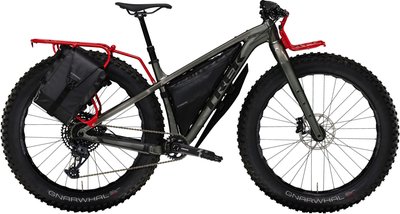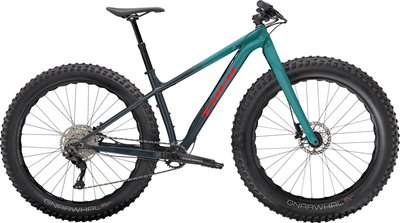Trek Mountain Bikes
4 Results
Trek Mountain Bike Technology
Trek’s mountain bike line is filled with technological features to help you go fast and stay in control and comfort out on the trail. Understanding the different technology options and understanding how they change your ride while out on the trails is an important step when purchasing a mountain bike.
ABP – Active Braking Pivot
ABP or Active Braking Pivot technology is found on all of Trek’s full suspension mountain bikes. For years, full suspension bikes have been hindered by braking forces affecting the suspension. When the brakes are engaged, the suspension stiffens and the bike often loses traction. ABP is Trek’s way around this problem and uses a specific rear pivot placement that separates the rear brake calliper from the frame and suspension. Out on the trail this means your suspension keeps working while you brake, which creates a more controlled ride.
RE:activ
Trek works in close collaboration with automotive suspension company Penske to create the RE:activ suspension damping system. Designed based on technology from Formula 1, the RE:activ system is tuned to provide ‘regressive damping’, which creates a stiff and stable pedalling platform while still allowing a reactive suspension system when the trail gets rough.
Full Floater
Trek’s Full Floater suspension system is found on all Trek’s full suspension mountain bikes and is designed to create a ‘floating’ rear suspension. Using two suspended pivots, the Full Floater equipped rear suspension is suspended, which greatly improves pedalling efficiency and gives you the impression of a bottomless feeling to your suspension.
IsoSpeed
The IsoSpeed system has been developed and refined by Trek to provide their endurance road and mountain bike hardtails with a more compliant rear end. Utilising a pivot system that ‘decouples’ the seat tube from the top tube, the IsoSpeed system allows the seat tube to ‘flex’ with the road or trail bumps. Increasing compliance and comfort while still maintaining the stiffness of a traditional hardtail. The IsoSpeed system is found on the Procaliber range of hardtails.
Popular Mountain Bike Models
Trek offers a deep range of mountain bikes, from the entry-level Marlin hardtail through to World Championship winning replica models. Looking to the premium options, there are typically both aluminium and carbon-fibre framed options. This are designated by the numbers, with single-digit numbers meaning an aluminium frame (e.g: Trek Fuel EX 9), and double digit numbers with a decimal place separating them referring to the carbon-fibre versions (e.g: Trek Fuel EX 9.8).
Cross country
Top Fuel dual suspension, Procaliber and Superfly hardtails
Typically has 90–100mm of suspension travel
Wheel size – 29er (27.5 in the small sizes)
Suited to XC/marathon racing and trails
Trail
Fuel EX and Remedy dual suspension, Stache hardtail
Typically has 120–150mm of suspension travel
Wheel size – 650B/27.5in and 29er
Suited to trail riding with technical trails, jumps/drops and rocks, uphill climbing
Enduro
Slash and Remedy dual suspension
Typically has 150–170mm of suspension travel
Wheel size – 650B/27.5in and 29er
Suited to enduro racing and all-mountain riding with technical trails, large jumps/drops and rocks, some uphill climbing
Downhill
Session – 9.9 and 8.8
Typically has 200mm of suspension travel
Wheel size – 650B/27.5in
Suited to downhill specific trails with very large jumps/drops and rocks, no uphill climbing





